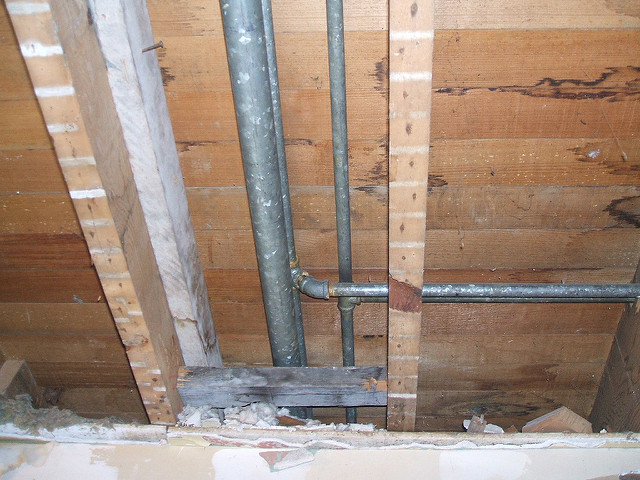Expose Hidden Water Line Leaks: Six Tested Techniques for Detecting
Expose Hidden Water Line Leaks: Six Tested Techniques for Detecting
Blog Article
This great article down below in relation to Leaking water lines is extremely remarkable. Don't skip it.

Early discovery of leaking water lines can minimize a prospective calamity. Some tiny water leaks might not be visible.
1. Take A Look At the Water Meter
Every house has a water meter. Inspecting it is a guaranteed manner in which helps you find leakages. For beginners, switch off all the water resources. Ensure no one will flush, make use of the faucet, shower, run the washing equipment or dishwashing machine. From there, most likely to the meter as well as watch if it will certainly transform. Given that nobody is utilizing it, there should be no activities. That suggests a fast-moving leakage if it relocates. If you detect no changes, wait a hr or 2 as well as examine back again. This suggests you may have a slow-moving leak that could even be below ground.
2. Examine Water Usage
If you spot abrupt changes, despite your consumption being the same, it means that you have leakages in your plumbing system. An abrupt spike in your expense indicates a fast-moving leak.
A constant increase every month, also with the same routines, reveals you have a slow leakage that's additionally slowly intensifying. Call a plumber to extensively examine your property, especially if you feel a cozy area on your floor with piping below.
3. Do a Food Coloring Examination
When it comes to water usage, 30% comes from bathrooms. If the shade somehow infiltrates your dish throughout that time without flushing, there's a leak in between the storage tank and bowl.
4. Asses Outside Lines
Don't forget to examine your outside water lines also. Test faucets by attaching a garden pipe. Ought to water permeate out of the connection, you have a loosened rubber gasket. Change this and make certain all connections are limited. If you have actually got a lawn sprinkler, it will certainly aid get it skillfully checked out as well as kept annually. One small leak can squander tons of water and spike your water costs.
5. Examine as well as Evaluate the Situation
Home owners must make it a routine to inspect under the sink counters as well as also inside cabinets for any bad odor or mold and mildew development. These 2 red flags show a leakage so timely interest is called for. Doing regular examinations, also bi-annually, can save you from a major trouble.
If you understand your home is already old, maintain a watchful eye on your heating systems, pipes, pipelines etc. Check for discolorations and also deteriorating as many pipes and devices have a life span. They will likewise naturally deteriorate because of damage. Do not wait for it to escalate if you believe dripping water lines in your plumbing system. Call a specialist plumber immediately so you don't end up with a dreadful mess in your home.
Early detection of dripping water lines can minimize a prospective disaster. Some little water leakages might not be noticeable. Examining it is a surefire way that helps you uncover leakages. One small leak can lose tons of water as well as surge your water costs.
If you think dripping water lines in your plumbing system, do not wait for it to rise.
How to Know If Your Home Has a Hidden Leak
Water Meter Reveals Inexplicable Water Usage
If you’d like to test whether or not there’s a leak somewhere in your home, you can do this using your water meter. Here is how to conduct the test:
Don’t use any water in your home for at least 30 minutes; this also means not turning on faucets or water-using appliances.
Go outside, and check your water meter for activity.
If your water meter shows that there was activity, even though no one was using any water, this proves that there is a leak in your home.Visible Mold or Mildew Growth
Leaks behind walls create moist, dark environments that allow mold and mildew to grow and thrive. Eventually, you might see mold growth forming on the wall closest to a hidden leak.
If mold is growing in an area that receives a high amount of moisture, such as a bathroom, it may simply be an indication that better ventilation is needed. However, if you see mold growth on a wall or the ceiling in an area where you would not expect, you probably have a hidden leak.
Musty, Mildew Odor
Sometimes you might not be able to see the mold or mildew that is growing as a result of a leak. However, the smell can give the problem away just as easily. If you catch a whiff of something musty, there’s a good chance that old water is collecting somewhere in your home that you can’t see.
Stained/Warped Walls, Ceilings, or Floors
When your home soaks up water, a variety of red flags can become visible, including ceiling stains, bubbling drywall, warped walls, and sagging floors. While these issues can be caused by excess humidity, they can also be signs that a pipe or plumbing connection has started leaking behind your walls.
Inexplicably High Water Bill
After a while, you get a general sense for what your water bill should be. If you own a pool or sprinkler system, your bill will tend to be higher during summer. However, if you receive a water bill that seems especially high, and you can’t figure out what caused it, then you may have a hidden leak somewhere that’s increasing your bill.
https://www.plumbingjoint.com/blog/2019/july/how-to-know-if-your-home-has-a-hidden-leak/

We were shown that write-up about Finding hidden leaks through an associate on another domain. Liked our blog posting? Please share it. Let other people check it out. Thanks a lot for your time. Don't forget to stop by our site back soon.
About Report this page